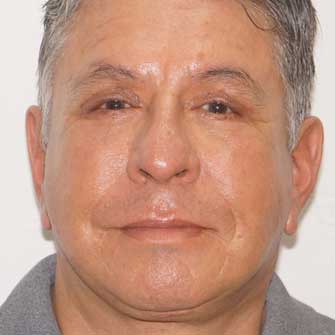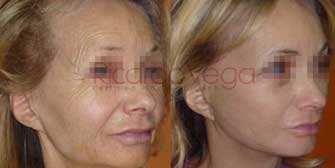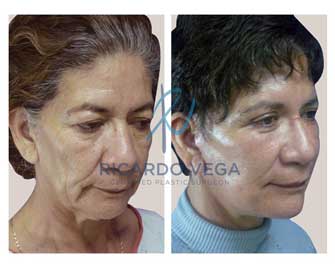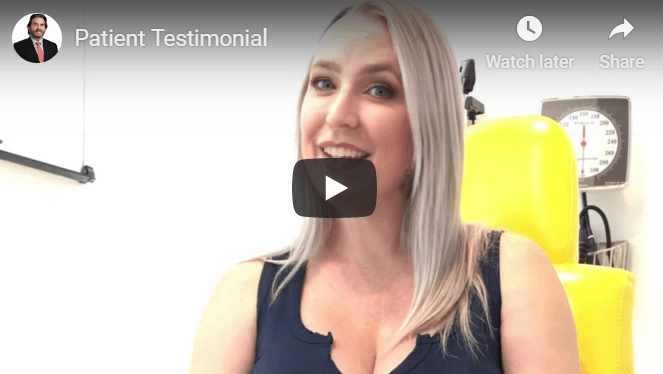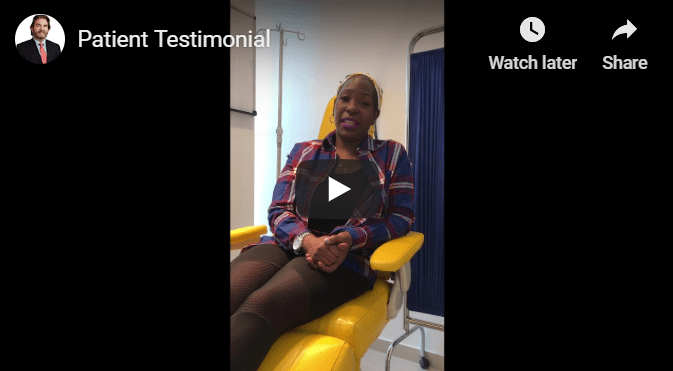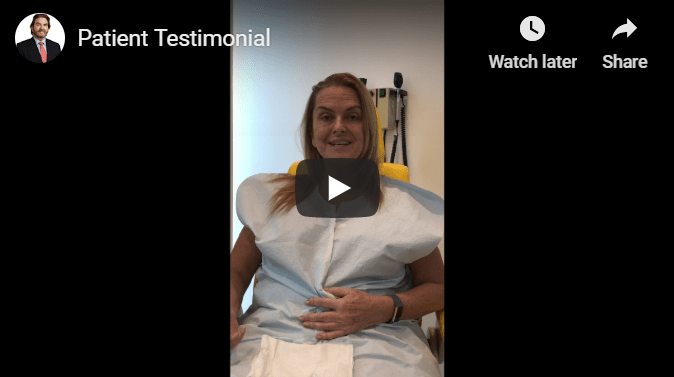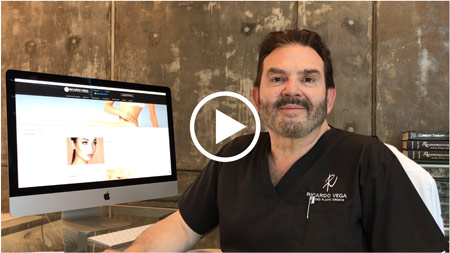FACELIFT PROCEDURE OVERVIEW

A full or complete facelift improves the skin and tissues of the lower two-thirds of the face, from the ears, across to the cheeks, and down to the jaw line, by removing excess fat, tightening muscles and re-draping skin.
FACELIFT BENEFITS
A facelift, or rhytidectomy, is a surgical procedure that improves visible signs of aging in the face and neck, such as:
- Relaxation of the skin of the face causing sagging
- Deepening of the fold lines between the nose and corner of the mouth
- Fat that has fallen or has disappeared
- Jowls developing in the cheeks and jaw
- Loose skin and excess fat of the neck that can appear as a double chin or "turkey neck"
WHAT A FACELIFT CAN'T DO
As a restorative surgery, a facelift does not change your fundamental appearance and cannot stop the aging process.
A facelift can only be performed surgically; minimally invasive rejuvenation treatments cannot achieve the same results, but may help delay the time at which a facelift becomes appropriate and complement the results of surgery.
Some minimally invasive treatments, such as stem cell facelifts, are of unproven benefit.
Who is a good candidate for a facelift?
Facelift surgery is a highly individualized procedure. You should do it for yourself, not to fulfill someone else’s desires or to try to fit any sort of ideal image.
- Healthy individuals who do not have medical conditions that impair healing
- Nonsmokers
- Individuals with a positive outlook and realistic expectations
During your consultation, Dr. Ricardo Vega will discuss what is the right for you.
How should I prepare for a facelift?
In preparing for a facelift, you may be asked to:
- Get lab testing or a medical evaluation
- Take certain medications or adjust your current medications
- Apply certain products to the facial skin preoperatively
- Stop smoking
- Avoid taking aspirin, anti-inflammatory drugs and herbal supplements as they can increase bleeding and bruising
A facelift may be performed in an accredited office-based surgical facility, licensed ambulatory surgical center, or a hospital. You must arrange for a friend or family member to drive you to and from surgery and to stay with you the first night following surgery.
Recovery
Following completion of a facelift, a bandage might be placed around your face to minimize swelling and bruising. Small tubes may be present to draw off any excess blood or fluid.
You will be given specific instructions on how to care for the surgical site and drains, medications to apply or take orally, specific concerns to look for at the surgical site or in your general health and when to follow up with Dr. Ricardo Vega.
Be sure to ask Dr. Ricardo Vega specific questions about what you can expect during your recovery period.
DO I NEED A FULL FACE LIFT PROCEDURE?
MEET DR. RICARDO VEGA
MEMBER OF




Dr. Ricardo Vega is an international renowned Board Certified Plastic Surgeon with private practice in Tijuana, Mexico for over 20 years. He has spent a lifetime getting the expertise, education, training and practice with over thousands of procedures throughout his career… SEE MORE











